SUBSCRIBE TO OUR NEWSLETTER!
We write a new blog article every two weeks! Stay on top of foodies news in Colorado Springs, plus be the first to hear about new food tours and receive exclusive discounts.
Food tours now available through August 2025 with more availability coming soon!
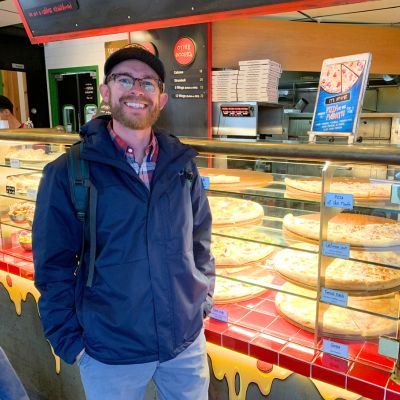
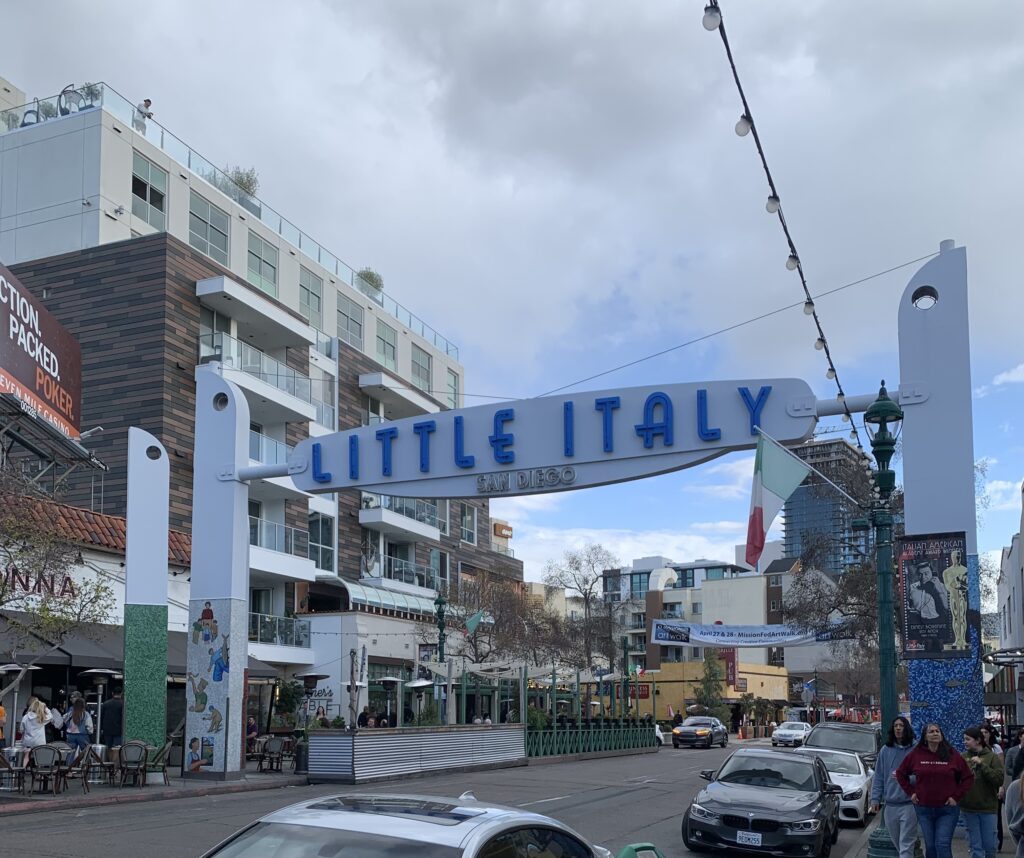
Although you might think New York or Chicago lay claim to this title, the West Coast city of San Diego surprisingly has the biggest Little Italy of all, covering a whopping 48-square blocks! I was very excited to explore this historic and culturally rich area with the tour company So Diego.
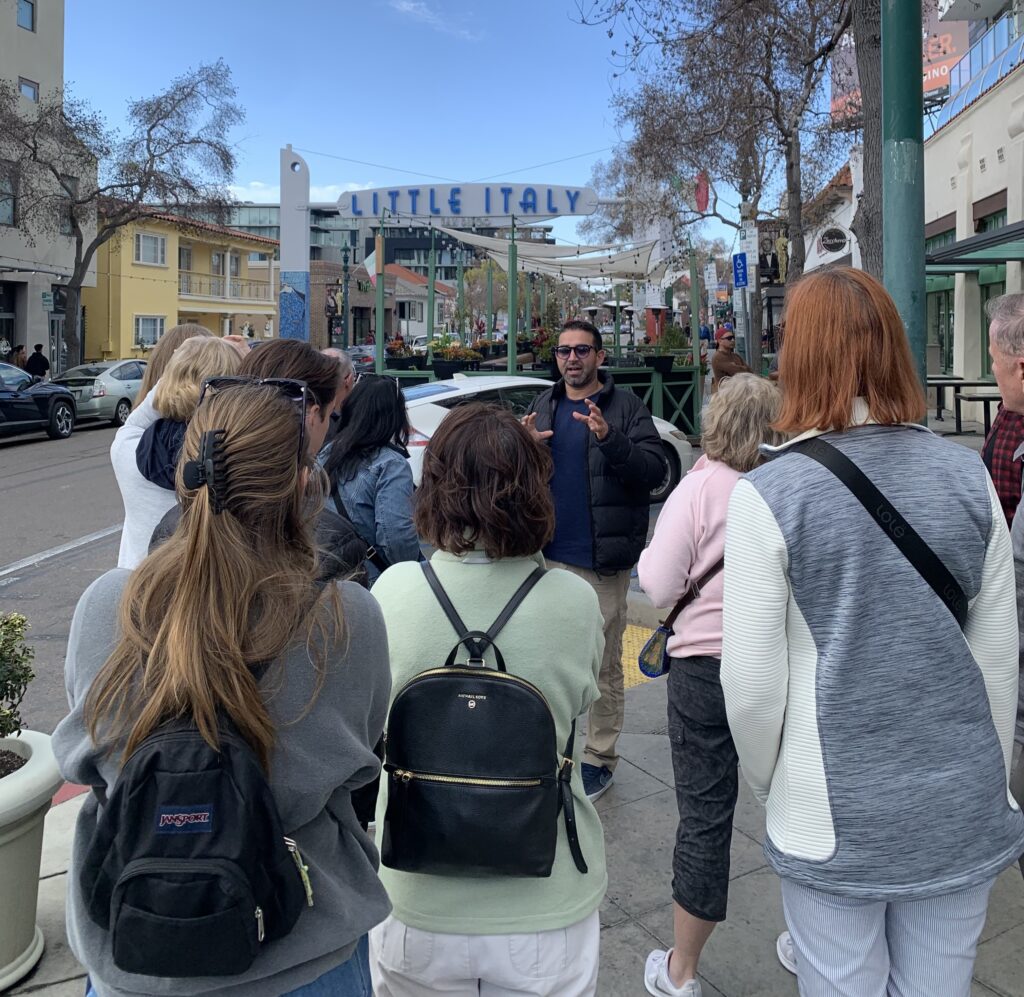
We began our tour at the Piazza della Famiglia, which is located in the heart of Little Italy. It offers people a place to gather, eat, drink, and attend farmers’ markets and other events. Our tour guide, Raul, greeted us beside a majestic fountain reminiscent of those found in Europe. Raul was an energetic and experienced guide who has conducted tours in seven different countries over the past 12 years!
Before we headed to our first stop, Raul told us about the history of Little Italy. Many Italian immigrants first came to California during the Gold Rush of the mid-1800s, and later settled in San Francisco. When an earthquake hit San Francisco in 1906, many Italian families moved to San Diego to work in the city’s fishing and canning industries. By the 1920s, Little Italy was a huge residential neighborhood with a bustling business district and incredible restaurants, and San Diego had earned the nickname of “Tuna Capital of the World.”
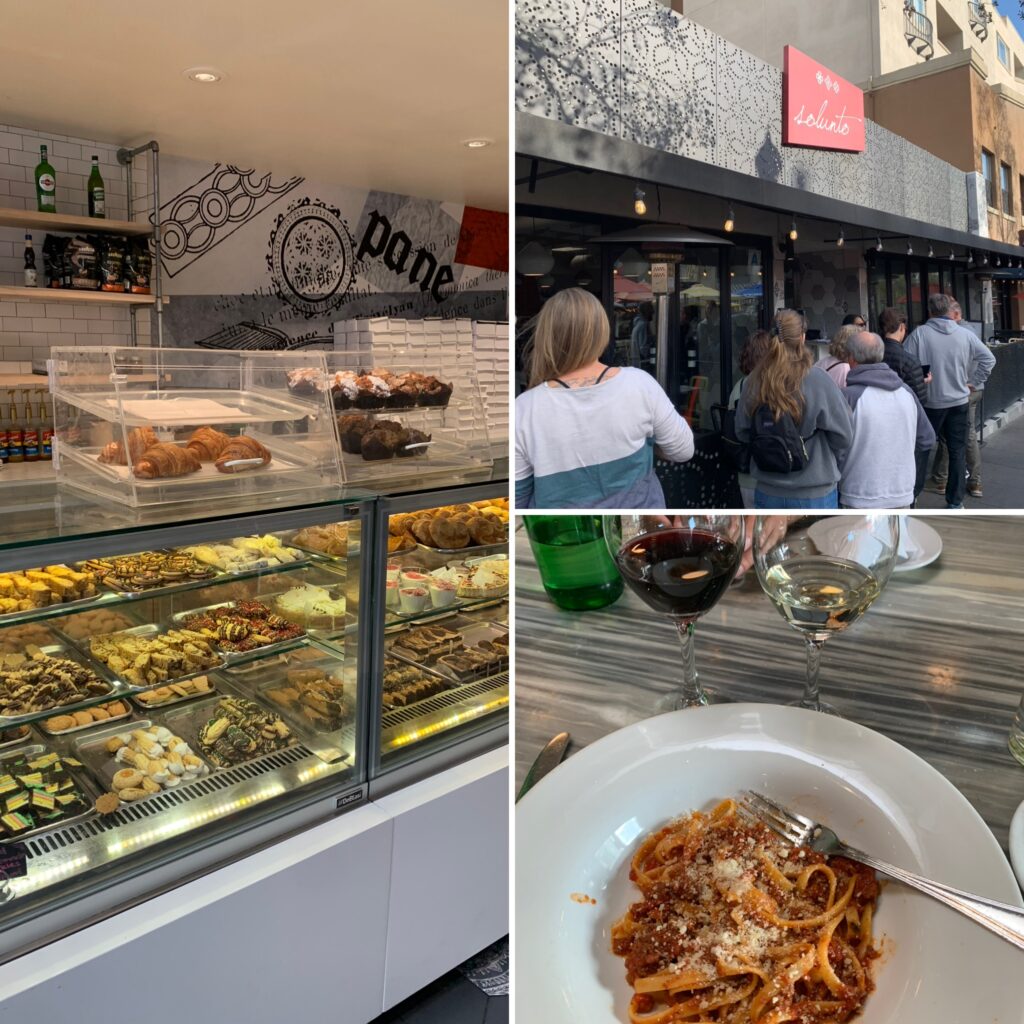
Raul led us to Solunto, where we started off our tour with bread and a marinara dipping sauce. We also received not one but two different Italian wines: a Pinot Grigio from Venice and a Chianti from Tuscany. We were then served a spaghetti bolognese for our main course. The pasta was fresh and bouncy, and the meat sauce was melt-in-your-mouth good. It’s incredible how such a simple, humble dish can be mind-blowingly delicious when done right. The pasta paired especially well with the Chianti. All-in-all, it was a fantastic start to the tour!
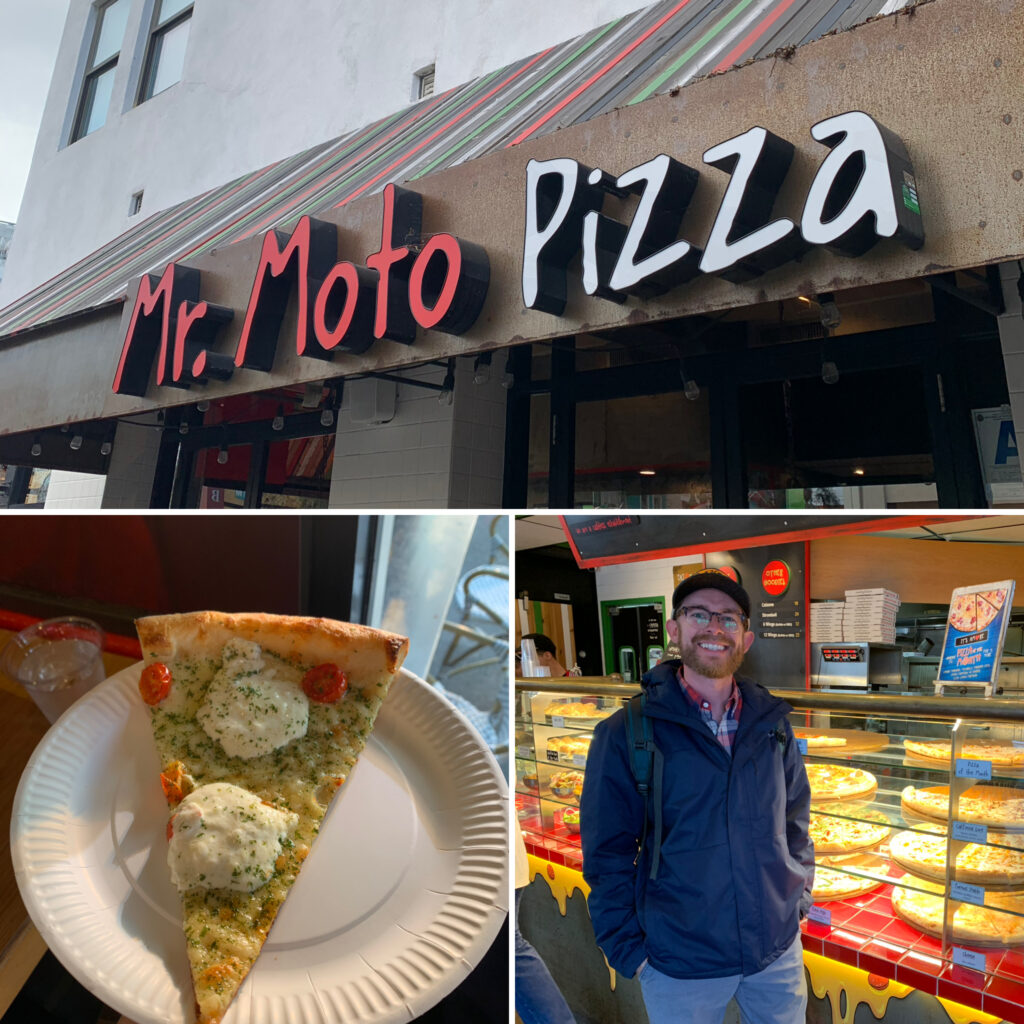
Our next stop was Mr. Moto Pizza, a small but mighty by-the-slice pizza shop. Raul warned us that although the outside might look like a Domino’s, the flavors were far superior to fast food. Inside, we were greeted by a huge line of customers and a massive glass case offering at least a dozen different pizzas with a balance between classic styles and modern flavor reinventions. Each guest was allowed to pick any slice they wanted, and I found it overwhelming to decide from so many different options. However, I eventually saw the words “burrata cheese” and settled on the Mamma Moto, which also includes truffle oil, parsley, and cherry tomatoes on a homemade garlic paste base. The crust was perfectly cooked, the burrata was creamy, and the truffle oil wasn’t too overwhelming. It was fun to compare tasting notes with the other 14 tour guests, and we also enjoyed learning about the differences between Italian style and New York style pizzas from Raul.
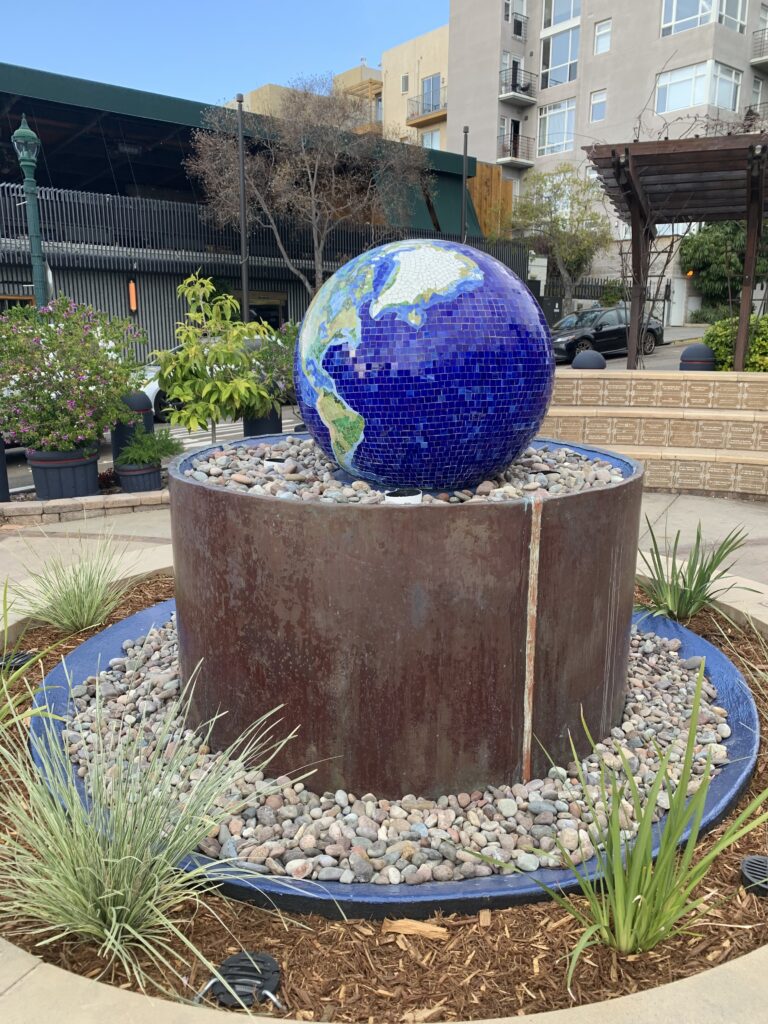
In between restaurants, Raul shared many of Little Italy’s best sights and stories with us. We walked past the Piazza Basilone, named after a WWII general, and I was reminded of Colorado Springs, as both our city and San Diego share a strong military history. We also saw many banners of famous Italian Americans that lined the streets. The banners depict well-known celebrities such as Al Pacino, Lady Gaga, and Bruce Springsteen, but also highlight individuals with lesser-known names. Raul shared the story of one such individual, Amadeo Giannini, who founded the Bank of Italy in 1904. Giannini was one of the first bankers to provide loans to immigrants at a time when most other banks refused. He would later purchase and merge his company with the Bank of America, making him one of the most successful businessmen of his time.
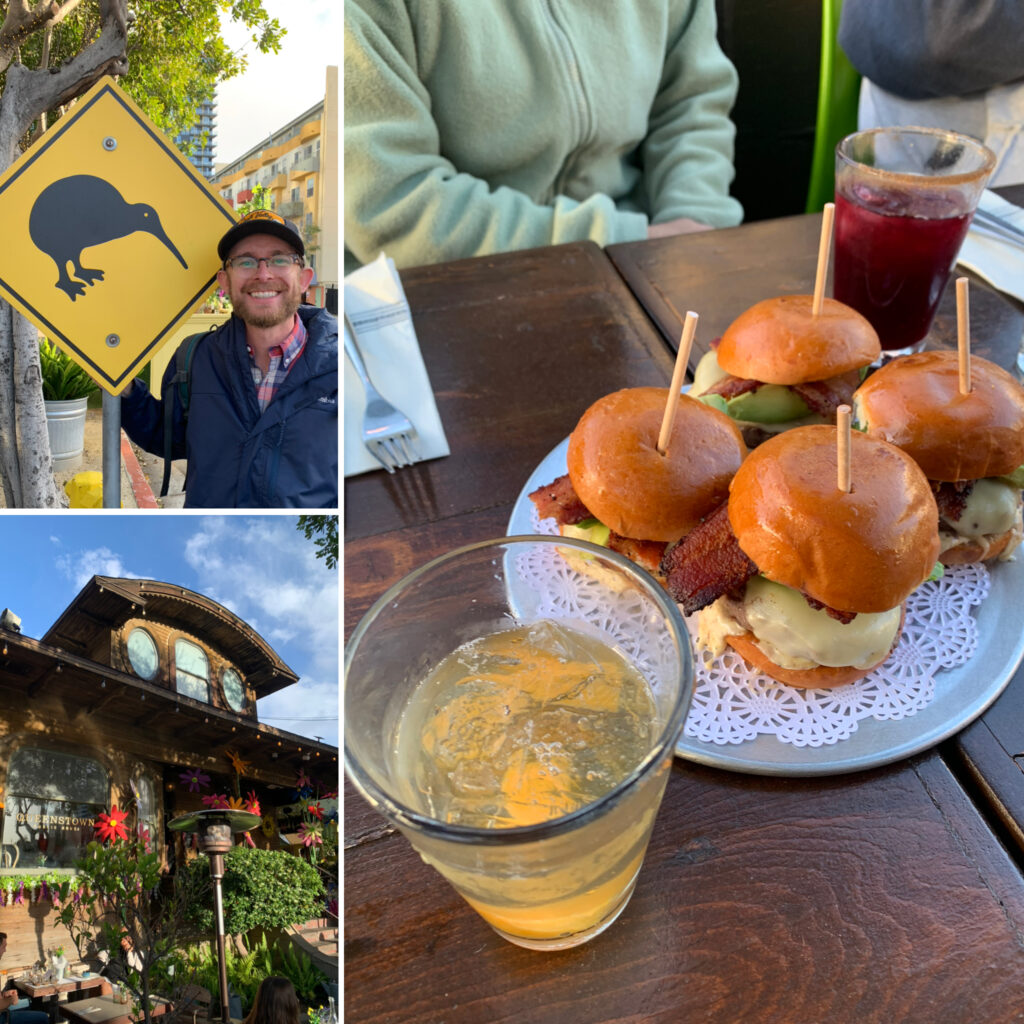
For our third stop, we visited Queenstown Public House, which celebrates dishes from the island nation of New Zealand. This was especially exciting for me, as I used to live in New Zealand. In fact, the ski town the restaurant is named after is where I spent my first few months! The restaurant looked like a quirky, tropical treehouse, and even had a “kiwi crossing” sign out front. We were offered our choice of three different sangrias. I went with peach and basil, which paired well with the beef and lamb sliders we were served. The slider was hearty and tasty, but I missed an iconic New Zealand burger ingredient – shredded beets!
But what is a New Zealand themed restaurant doing in Little Italy, anyways? An interstate was built through Little Italy in the 1970s, and many families left. In the wake of this, new businesses and groups of people helped to diversify Little Italy, and you will now find many types of international cuisines offered throughout the neighborhood.
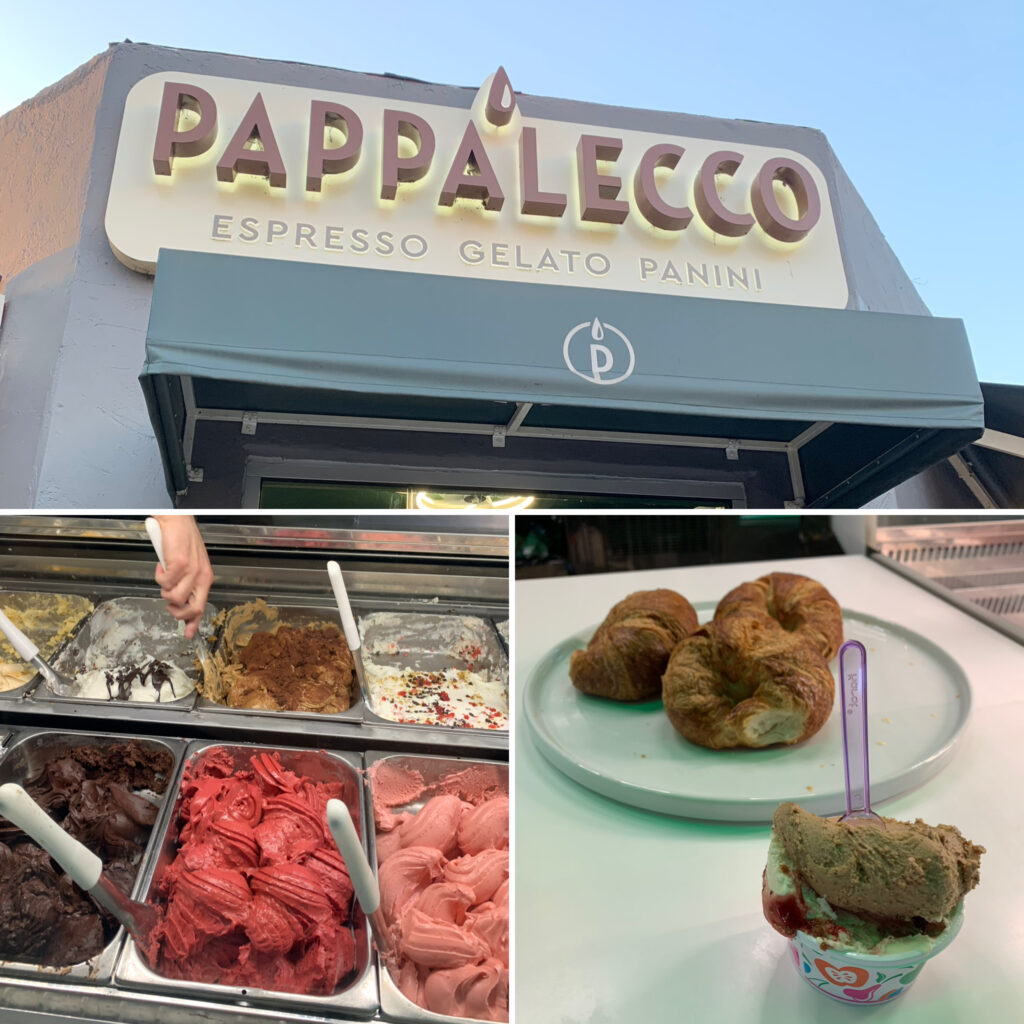
For dessert, our final destination was Pappalecco, a cute corner shop that promises to “deliver the most Authentic Italian Café Experience outside of Italy.” And what’s a food tour of Little Italy without gelato? Here, we were allowed to choose any two flavors of this iconic Italian dish. I settled on tiramisu (that month’s special flavor) as well as berry cheesecake, which was my favorite of the two. It was a wonderful way to end an excellent tour! Thanks, So Diego!
Saluti, Adam at Rocky Mountain Food Tours
(So, what’s a food tour, anyway…?)
attractionseditor's pickevents & holidaysgift ideashistorylocal diningtours we've takentravel
We write a new blog article every two weeks! Stay on top of foodies news in Colorado Springs, plus be the first to hear about new food tours and receive exclusive discounts.
Notifications